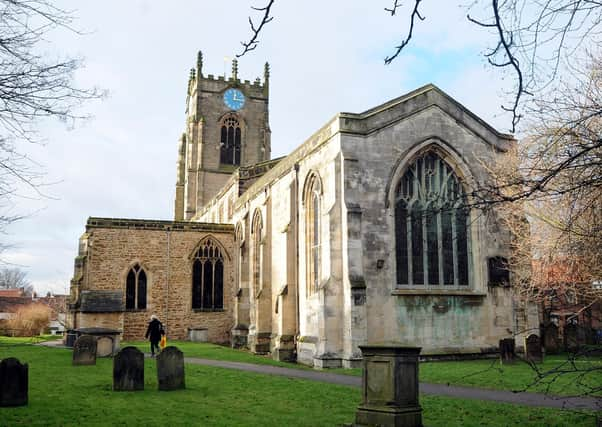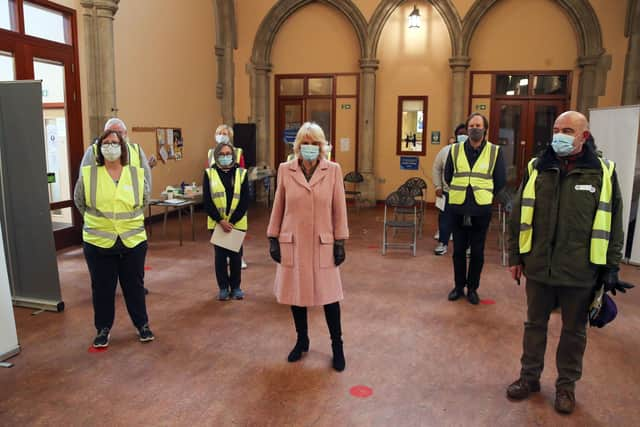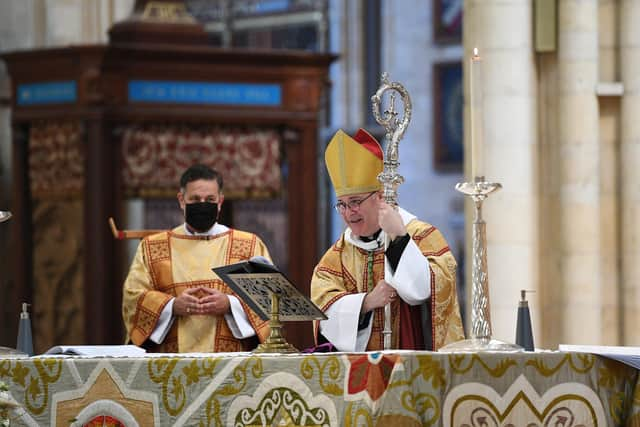How role of churches has grown since pandemic – Dr Dee Dyas


In recent years we have heard a great deal about the decline of the Church in this country, and the perception of a growing gap between those who attend services, and the priorities of the rest of the population.
However, the coming of Covid-19 has shone new light on the importance to individuals and communities of what churches have been quietly offering for decades.
Advertisement
Hide AdAdvertisement
Hide AdNew parents told us they could no longer find support and friendship at toddler groups; older people couldn’t volunteer or meet for coffee or lunch.


Children’s groups, education clubs, fitness classes, dementia clubs, addiction and homelessness support, and social and cultural activities for people of all ages, had to be shut down.
And church buildings were no longer available as peaceful safe spaces in which to grieve and find comfort and hope. People inside and outside churches felt bereft. “I needed the church as a physical space to focus on processing grief/feelings from Covid,” said one non-church respondent.
Covid has caused illness and a tragic number of deaths right across our society. The hidden cost is in the huge increase in mental and emotional stress and in the damage inflicted by this invisible enemy and its impact on our wellbeing, jobs, education, and hopes for the future.
Advertisement
Hide AdAdvertisement
Hide AdOur research shows clearly that this was made so much worse because churches not only had to shut down the ‘National Wellbeing Service’ they usually offer, but for the first time in the history of this country, they could not play their usual role as emergency support centres.


The University of York research was designed to give voice to grassroots experience; to find out what was really happening on the ground. What became evident was not only increased need but creative – and costly – responses and initiatives by churches all over the country.
In Leeds, at the point when coffins were simply brought into the crematorium, with neither services nor mourners permitted, a local Baptist minister offered to provide a short service free of charge.
These services were filmed and sent to each family. “It broke my heart to think of people seeing their loved ones go into hospital and never seeing them again, never being able to say goodbye, so I offered to do that for them. Sometimes I did three services a day. After each service I sat in my car and cried,” he said.
Advertisement
Hide AdAdvertisement
Hide AdChurches acted as bases for foodbanks and delivered shopping for those isolating; they gave gifts to those who were alone, and activity packs to children living in small flats; they set up Facebook networks for rural communities; they continued to seek out those suffering from addiction or homelessness.
And when other organisations had to furlough staff or withdraw, the church (in the words of a vicar from Bradford) was “still here – because people still come, people still need food – and they’re saying where can I go?”
The Church found new and creative ways to offer support to individuals and families but they warn: “We know it’s going to roll on for years. It may feel like it’s all over, but actually we’re going to be picking up a lot of the pieces for ages.”
That warning is echoed by many. People are tired, insecure, anxious – and they feel alone. Nearly 80 per cent of respondents identified social isolation as a key issue. There is a kind of post-Covid stress disorder which will take a great deal of healing. People of all ages need human contact, encouragement, hope – and fun. They need to get back to activities which connect them with others. These are things that churches can help provide.
Advertisement
Hide AdAdvertisement
Hide AdChurches and other faith groups need to be seen as key partners in recovery. They offer a unique national infrastructure, present in every community, equipped with local knowledge and networks, and often the only available public space for community use.
As another non-church member put it forcefully: “These places must remain open. They are essential to the community, especially for times such as this.”
The report is available to read here at https://churchesandcovid.org and has being circulated to national and local government, MPs and senior church leaders.
Dr Dee Dyas is Director of the Centre of the Study of Christianity and Culture at the University of York.
Advertisement
Hide AdAdvertisement
Hide AdSupport The Yorkshire Post and become a subscriber today. Your subscription will help us to continue to bring quality news to the people of Yorkshire. In return, you’ll see fewer ads on site, get free access to our app and receive exclusive members-only offers. Click here to subscribe.
Comment Guidelines
National World encourages reader discussion on our stories. User feedback, insights and back-and-forth exchanges add a rich layer of context to reporting. Please review our Community Guidelines before commenting.